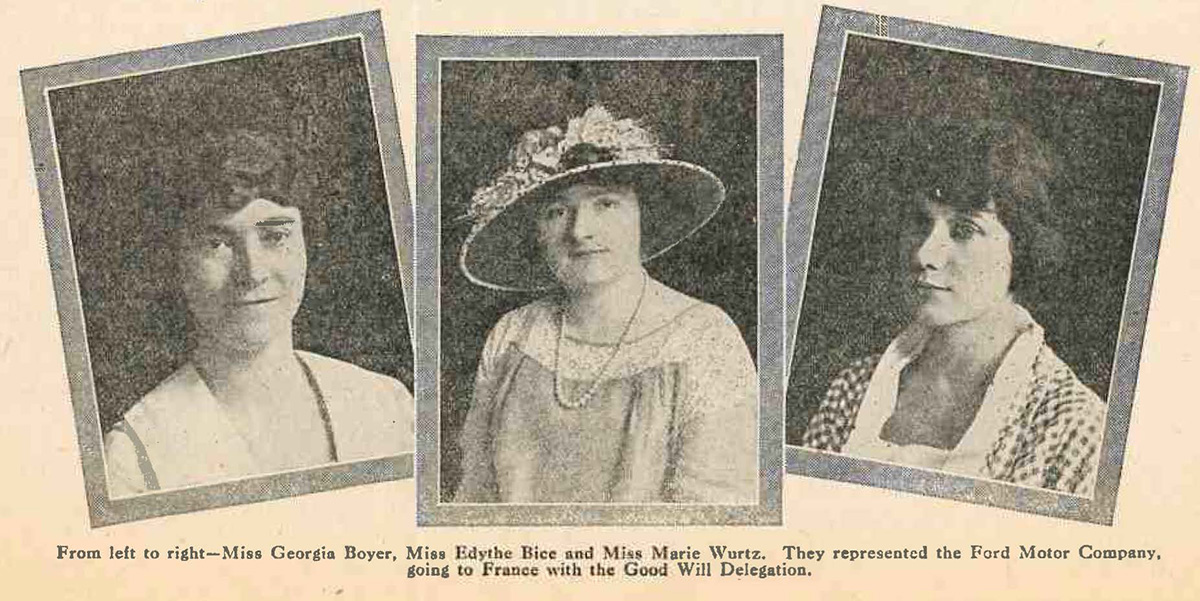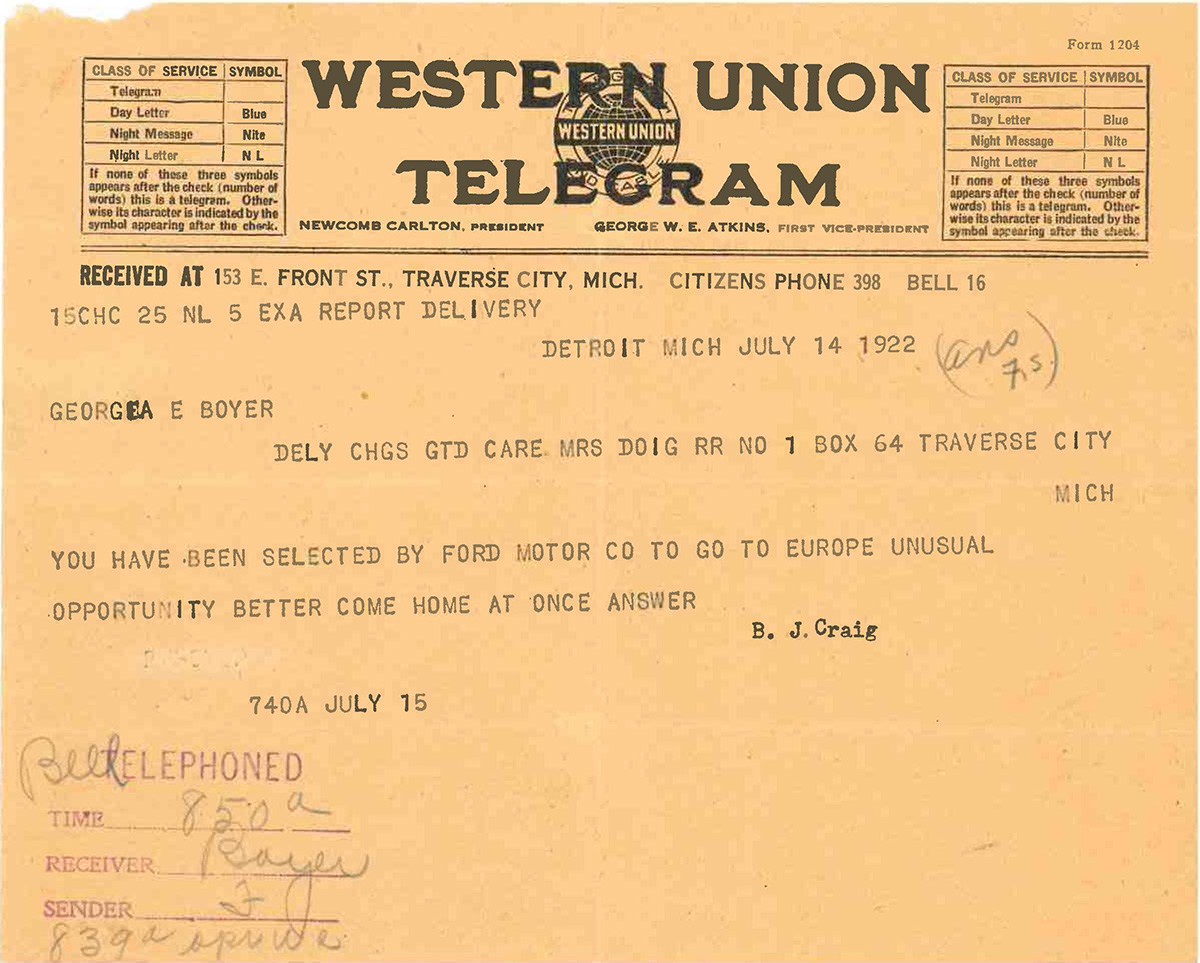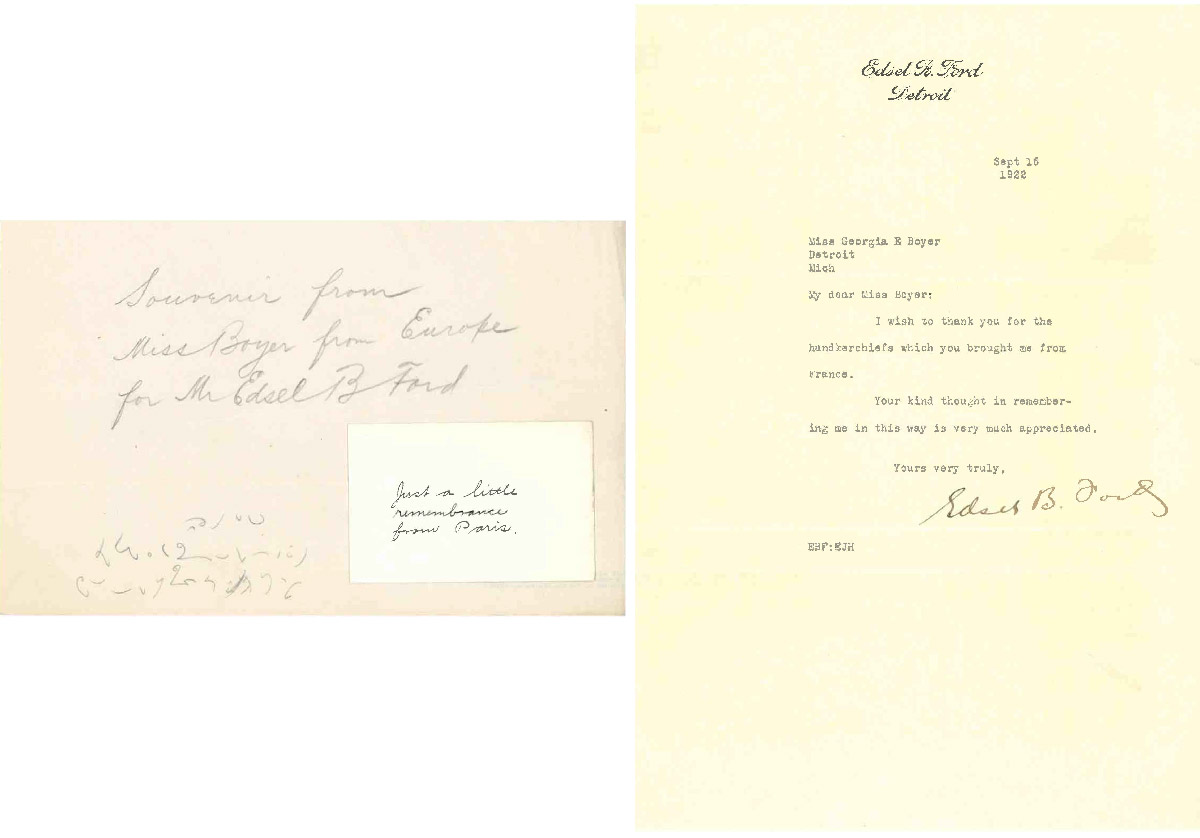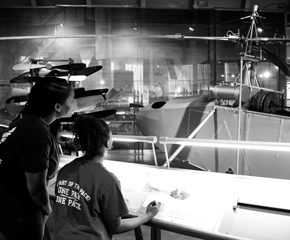Over the Hills and Far Away: The American Committee for Devastated France Good Will Delegation Tour

Ford delegates Georgia Boyer, Edythe Bice, and Marie Wurtz. Ford News, October 8, 1922 / Image by Kathy Makas
In 1922, three Ford Motor Company employees were sent to France as part of the American Committee for Devastated France Good Will Delegation Tour to raise awareness of the challenges and needs of the people there. The committee itself was formed during WWI by philanthropist Anne Morgan and physician Anne Murray Dike. Before the war had ended, the committee was soliciting funds and donations and in response, Ford Motor Company sent cars, tractors, and crates of car repair parts to the organization to help relieve war torn France. After the war, while Americans were moving on from the Great War, the committee wanted to remind them that France was still reeling from the years of fighting it had seen. To this end, the Good Will Tour was formed consisting of young female delegates contributing $10,000 each from major American companies. To raise the money, candidates were chosen from within their company by popular vote, with each vote costing $0.10; the only requirements were that they were women engaged in paid work and over 18 years of age.
Ford Motor Company jumped into the fundraising role, placing voting boxes with signs that read "Have you voted today?" in every department and placed publicity in newspapers and special announcements. The company raised enough money to send three delegates, two chosen by popular vote, Edythe Bice and Marie Wurtz, and one as the longest female employee at Ford, Georgia Boyer.

Boyer received word she was chosen while away from work. Acc. 395 / Image by Kathy Makas
On July 26, 1922, the delegation left New York City on the steamer La France for Havre with $500,000 total for committee efforts in France. The tour started in Paris and made its way through the devastated region, traveling through Soissons, Vic-sur-Aisne, Reims, Verdun, and other towns. Boyer noted, "All through this devastated section we saw miles and miles of shell holes, barbed wire, stumps of trees, several dugouts and a few tanks and machine guns which were left by the Germans. Hundreds of buildings, homes and churches were destroyed all through this section, also some beautiful chateaux." But through the work of the committee and other organizations, new buildings and reconstruction were going on all around. The delegation saw the laying of the cornerstone of the Baby Welfare Station and a parade with hundreds of babies marched down the streets in decorated baby carriages. Still, the toll of the war was shocking to the American group. Bice recalled, "As we journeyed towards Verdun it was hard to realize that the war had been over four years. All along the way were shell-torn fields, trenches, dugouts, barbed wire still standing as they were placed, and wire still strung between the trees from which the camouflage screens were hung."


While they were visiting France, Bice and Boyer both wrote to Edsel Ford. Acc. 6 box 5 / Image by Kathy Makas
The delegates made their way back to New York on September 8 bringing with them stories of the destruction, but also of the work that the committee was performing. A series of articles about their time on the tour was published in the Ford News, and Bice presented a talk on Ford's WWI radio station. Bice shared in a Ford News article, the American Committee "is reconstructing not only destroyed material things, but the broken lives and spirits of a great and friendly people. More than that it is making a constructive contribution to the perpetuation of the civilization which 80,000 of our own Americans died to preserve." The committee engaged in work in France for a few more years, before discontinuing in 1924.
Learn more about this and other material in the Benson Ford Research Center.
Kathy Makas is a reference archivist at The Henry Ford.

